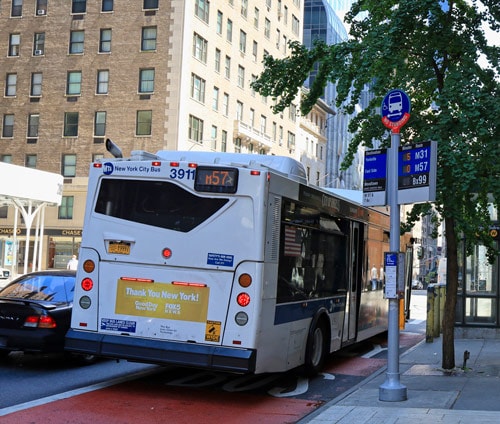Expand Public Transportation
Public transportation systems reduce the necessity for single occupancy vehicle trips, reduce the production of automobile emissions, increase incidental physical activity, and provide necessary transportation access for people with physical, economic, or other limitations. Policies that encourage public transportation infrastructure are needed to improve access for all people.
Recommendations

- Explore opportunities to increase funding to strengthen the positive health impacts associated with expanded public transportation options. For example:
- Encourage funding decisions that strengthen public transportation.
- Encourage states to increase investments in public transportation, congestion relief, air quality improvements, and other options, and to remove barriers to use of gas tax revenues for public transportation and bicycle-pedestrian improvements.
- Give state, regional, and local governments more flexibility to choose from transportation funding categories to meet local transportation needs.
- Explore the extent to which program requirements and resources can be made to be more comparable for public transportation, highways, non-motorized and rail travel alternatives to encourage investments in all modes of transportation.
- Provide incentives to support a strong network of public transportation options, including bus rapid transit and light rail, which connect housing and jobs as well as improve access to healthy foods, medical care, and other services.
- Work with government and non-government organizations to develop and implement model transportation planning policies that encourage transit-oriented developments and other mixed-use development and increase connectivity among neighborhoods and communities for all transportation modes.
- Work with agencies and non-governmental organizations to establish a policy that would promote bicycling and walking to public transportation stations by making these connecting trips easier, faster, and safer by:
- Providing bicycle storage at public transportation stations, bus stops, and city car-share point of departure locations.
- Assessing and addressing safety hazards for pedestrians and bicyclists through safety measures such as well-lighted crosswalks and signal timing and integrating those safety enhancements for pedestrian and bicycle access to public transportation stations, bus stops, and city car-share locations.
- Removing barriers to pedestrians and bicyclists on roads and intersections near public transportation stations and bus stops.
- Enhancing the public transportation system to accommodate bicyclists and pedestrians.
Read about other recommendations
Error processing SSI file
